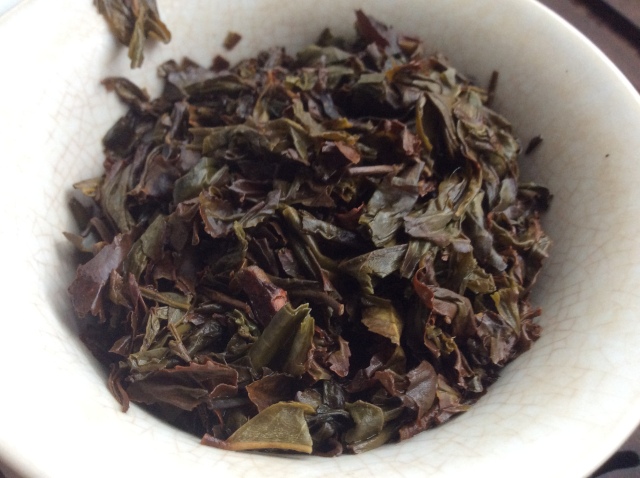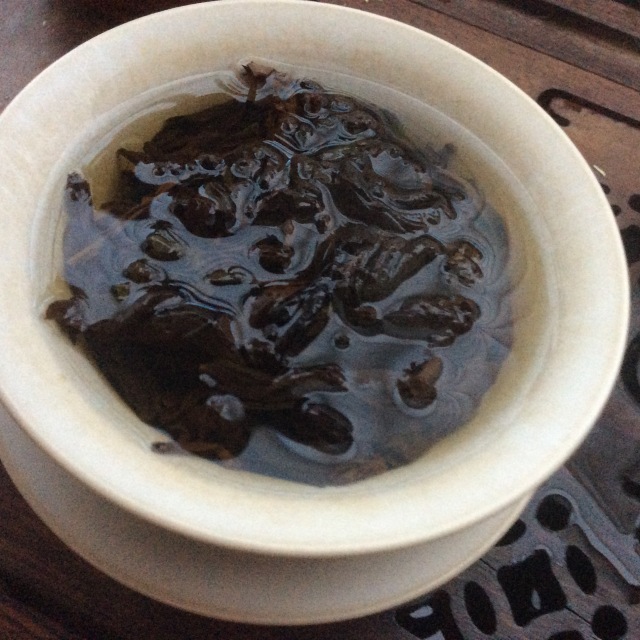I guess I need to promise to review something that’s not fromYunnan Sourcing in the near future here… Can’t really help it though is Scott sells good tea and that’s most of what my present tea cabinet consists of… Anyhow, I was sifting through the dregs of my San Ke Shu jar this morning, and realized that after the few whole fragments I pulled out, the rest may be dust after this. As this may be the last real session I have with this terrific tea, I felt obliged to write a post for it, so here goes:

The dry leaves by themselves still smelled amazing, like vanilla and spice. The rinsed smell opens into green earthiness, with sweet musk and peat moss. The first infusion is unexpectedly thin and bitter, but not necessarily in a bad way. There’s plenty of depth and sweet Lincang floralness already, and the leaves aren’t even open.
Year three is in my experience when sheng puer starts to show the very first signs of aged flavor, and I’m seeing a little bit here… There are still the soft vanilla candy flavors that I’ve known from this tea, but now something else has creeped in, probably best described as “woodsy” in the manner of tree bark and lichen (sounds weird I know), and maybe some tobacco. Steepings two and three certainly have this quality, along with a strong kuwei (bitterness that fades quickly into sweetness) and lots of texture. While I can’t say that I regret finishing this cake while it was young, I’ll probably always be curious where this would have gone now… I’m really enjoying some of these drier and more textured dark flavor notes. This tea is at once very sweet and very bitter, floral and woodsy, light and dark (like Darth Vader). It is a complicated character indeed (like Darth Vader).

Steeping five yields a deep yellow soup, notes of star anise, vanilla malt, and tree bark (lol at that description, but it’s how I feel). Knowing when to drink a tea is always a bit of a challenge, especially as I’m just now getting a feel for how Colorado dry storage affects my puer (it doesn’t kill it). My philosophy has been if it’s good now, drink it now, but I’m always tempted to hang onto fragments such as this, “just to see”. As I’ve discussed is the case with gongfu brewing in a session, there is no such thing as absolute better and worse, just change over time. The challenge is locating our own preferences within that. Certainly, there are those that would advocate that aging puer is mandatory, but I don’t believe that at all… You have to do what makes sense for you in this moment, because we don’t know what the future holds for any of us, tea included. Maybe this is where the human tendency to speculate about alternatives comes in (or in my case hanging onto fragments of mostly finished tea cakes); we want to know where that other road would have lead. I guess with tea, unlike life, we can sort of do this…

Having said this, may our understanding of the view of tea deepen, and our realization grow vast as space.
-Ginko-san














